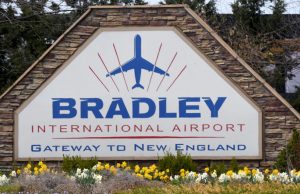What Major Airports are There in Connecticut?
Connecticut is one of the smallest U.S. states (48th by area) still, it is a popular destination for travelers. 3,3 million people take flights to and from Connecticut airports, which is about 0.38% of all aviation passengers in the United States. The significant share of this traffic belongs to Bradley International Airport (BDL). It’s also the only international airport in CT. Despite the high load (2.3 M passengers in 2019), the airport has good on-time performance for departures (82.78%) and arrivals (77.78%). Another busy airport in CT is Tweed New Haven Airport (HVN), with about 95,000 passengers in 2019. HVN is also the smallest public airport in Connecticut with scheduled commercial service, despite being the second largest.
The airports on the Connecticut map include 20 public ones (1 international among them), 28 private, 69 heliports, a balloonport, an ultralight airport, and 4 bases for seaplanes.


